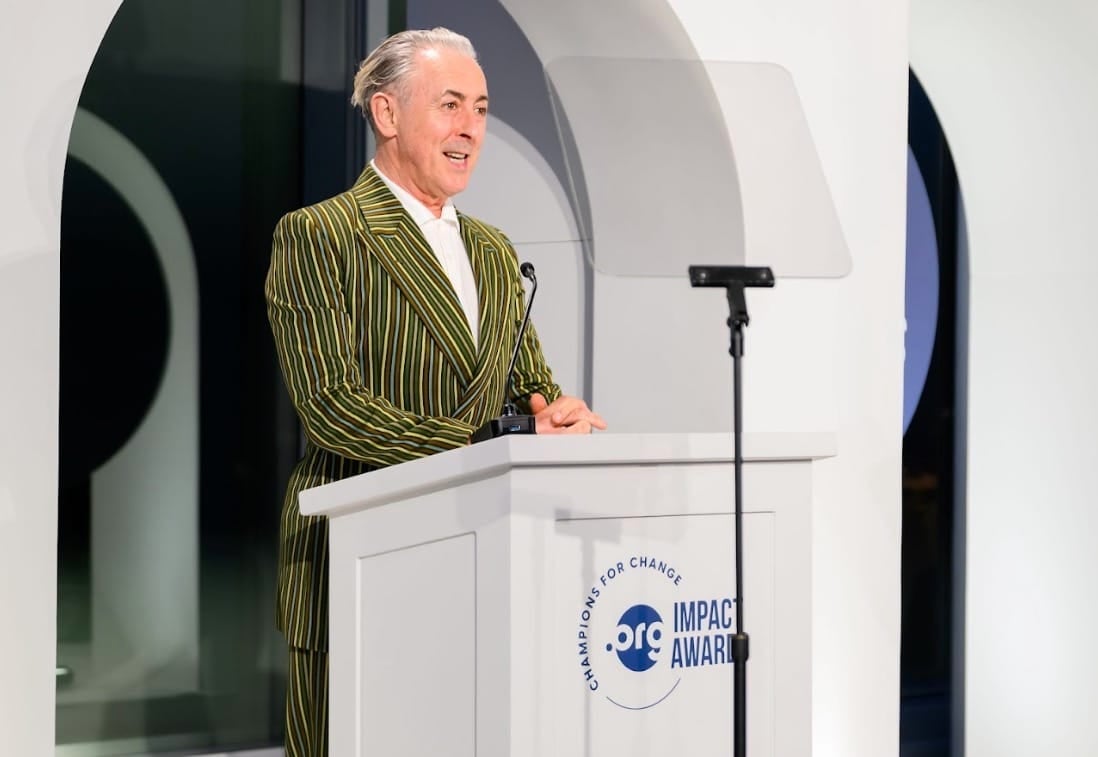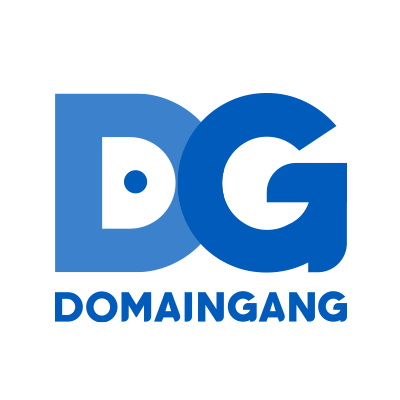YOUR AD HERE
This week it was announced that the 2024 Nobel Prize in Physics went to John J. Hopfield of Princeton University and Geoffrey E. Hinton of the University of Toronto. The one line summary of their work was ”for foundational discoveries and inventions that enable machine learning with artificial neural networks”.
But how is that relevant to domain names? In many ways, it turns out. Let’s dive in.
The Key Work
The very readable press release from the Nobel Foundation describes the research that culminated in the award. I quote parts below, but urge you to read the original.
John Hopfield used ideas from spin interactions for atoms to invent something called the Hopfield network that were used in associative memory. His work is directly applicable to repairing damaged or incomplete images, and similar tasks. It applies minimization principles to find the most likely complete image. The press release explains it this way:
When the Hopfield network is fed a distorted or incomplete image, it methodically works through the nodes and updates their values so the network’s energy falls. The network thus works stepwise to find the saved image that is most like the imperfect one it was fed.
Geoffrey Hinton used ideas from statistical physics to develop something called the Boltzmann machine:
The machine is trained by feeding it examples that are very likely to arise when the machine is run. The Boltzmann machine can be used to classify images or create new examples of the type of pattern on which it was trained… helping initiate the current explosive development of machine learning.
Image courtesy of the Royal Swedish Academy of Sciences, It shows the different type of network connections in the work recognized by the 2024 Nobel Prize in Physics. Image ©Johan Jarnestad/The Royal Swedish Academy of Sciences.
Neural Networks
AWS explains a neural network this way:
A neural network is a method in artificial intelligence that teaches computers to process data in a way that is inspired by the human brain. It is a type of machine learning (ML) process, called deep learning, that uses interconnected nodes or neurons in a layered structure that resembles the human brain. It creates an adaptive system that computers use to learn from their mistakes and improve continuously.
The key paper was published by Hinton and coworkers in 1986. It improved efficiency of neural network learning by introducing something called backpropagation. While it was decades later that the powerful AI systems that are trained on and apply this system reached the current stage, whether you use GPT or Copilot to understand your questions and generate an intelligent response, or to create an image or video, the AI you use is dependent on neural networks, and efficient training to recognize patterns.
To Learn More About Neural Networks
A readable introduction to neural networks is on the Coursera site: 8 Common Types of Neural Networks.
Incidentally, Geoffrey Hinton taught a free Coursera course on Neural Networks in 2012. While that course is not active, all of the platforms have numerous offerings on the topic. We covered online course platforms in the NamePros Blog Ways To Learn Almost Anything – Even About Domain Names.
Popularity of Term Neural Network
Google’s Ngram viewer shows how popular a term is in digitized Google Books, currently providing data through 2022. We can see that the term ‘neural network’ only became widely used in the mid-1980’s, and there is a strongly growing upward trend in recent years.
An independent indicator of use is found with the Google search with quotation marks, along with the Tools button. That produced about 196 million results for the singular “neural network” and only slightly fewer, 165 million, for the plural “neural networks.”
The Safe Superintelligence Connection
A number of Geoffrey Hinton’s graduate students have themselves become leaders in artificial intelligence. One of them is Ilya Sutskever who was a founding member of OpenAI, and involved in the aborted ouster of Sam Altman. This year Ilya Sutskever left OpenAI to form Safe Superintelligence Inc. SSI.inc. We covered that in the NamePros article Aftificial Intelligence – Superintelligence – Hybrid Intelligence – or simply Intelligence.
The Potential Dangers of Artificial Intelligence
In recent years Geoffrey Hinton is one of the best-known voices warning of the potential dangers to society from artificial intelligence. He ended his association with Google a few years ago so he could more freely speak on this topic.
One of the best articles I found on that topic. was this interview in the MIT Technology Review: Geoffrey Hinton tells us why he’s now scared of the tech he helped build.
Do Nobel Prizes Spur Interest in Related Domain Names?
It is hard to clearly answer this question definitively. There is probably some bump in a topic, although often the peak time for the term was well in advance of the awarding of the prize.
Registrations of Term ‘Neural Network’
From dotDB I found that the exact term ‘NeuralNetwork’ is registered in 77 TLDs, and the term appears in 562 longer names.
I also checked the plural ‘NeuralNetworks’ at dotDB, finding 52 exact registrations and 165 longer.
Relatively Few Sales
At least as listed on NameBio, there were only 5 recorded domain name sales including term ‘NeuralNetwork’, none above 4-figures. Here is the list.
Not Many Businesses Use Term
Although there are no doubt a large number of businesses that use neural networks, the number of businesses that use the term ‘neural network’ in their name, or formerly known as name, is quite modest: just 34 active listings on OpenCorporates. That probably explains the few publicly recorded sales of the term. While the ideas of Neural Networks are incredibly important, most businesses take on more specific and distinctive names.
The Best Neural Network Names
I checked the status of what seemed to me the best names related to the term – here is what I found:
- Neural.network is a superb exact match across the dot. It is currently listed for sale on Afternic for $5 million.
- NeuralNetwork.com is also for sale, currently listed at $750,000.
- NeuralNetwork.ai has a ‘future home’ showing.
- NeuralNetwork.io has been registered since 2015, but is not developed or have a for sale lander the day I checked.
- NerualNetwork.net redirects to GBOT.com.
- NeuralNetwork.co is listed on Afternic with a Make Offer.
- The plural NeuralNetworks listed with 4-figure prices in both .org and .io.
Neural Networks And Domain Name Appraisal
A domain name appraisal system that learns to become smarter and more accurate should be possible. There are a few scholarly articles on this topic, such as A Hybrid CBR-ANN Approach to the Appraisal of Internet Domain Names. CBR revers to case-based reasoning, while ANN is an acronym for Artificial Neural Networks.
I think that most current domain name appraisal systems are algorithmic in nature, using indicators such as length, extension, prior sales of similar names, number of registered TLDs, search and advertiser data, etc. While such systems may be complex and powerful, that is not true artificial intelligence, or at least not machine learning via a neural network.
In case some readers are not familiar with Google Scholar, it offers a powerful search capability for scholarly articles, mainly from journal articles, preprints and books, on any topic. For example, when I searched on the terms (not in quotation marks) ‘neural network and domain names’ it yielded 805,000 results. Not all are relevant to the topic, but those that are tend to be listed first.
Neural Networks Used By Bad Actors To Generate Names, and Those Trying To Stop Them
When I examined some of the scholarly articles related to domain names and neural networks, I was surprised to learn that some botnet operators use neural networks in a DGA, domain generation algorithm, to generate domain names to be used in the command and control channel.
At the same time, neural networks are also used by those trying to detect the names generated by botnets. Read more in the paper Neural networks based domain name generation.
Nobel Prize in Physics, Without a Physics Degree!
Although Geoffrey Hinton just won the Nobel Prize in Physics, neither of his degrees are in physics. He changed his B.A. degree several times, from history of art, to philosophy, and eventually graduating with a degree in experimental psychology. He then went to the University of Edinburgh for a PhD in artificial intelligence. His methods do draw heavily from both physics and biological neuroscience, however.
The Mount Everest Connection
Geoffrey Hinton’s full name is Geoffrey Everest Hinton. The Everest was based on his his great-great-granduncle, Sir George Everest, a nineteenth century British surveyor. Mount Everest was named in his honour in 1865. George Everest was only 16 when he went to India to begin his surveying campaign.
It turns out that Geoffrey Hinton has many accomplished relatives - read more here. His father was a biologist, and that influenced him to seek artificial intelligence modes that acted similarly to the human mind, rather than the symbolic processing approaches that were common at the time.
Not the Only AI-Related Nobel Prize in 2024
The 2024 Nobel Prize in Chemistry also has a strong AI connection. Along with David Baker’s ground-breaking work in the ability to synthesize new proteins, the 2024 prize was jointly awarded to Demis Hassabis and John Jumper of Google DeepMind for their AI model AlphaFold2, that used AI to predict the structure of almost all of the 200 million identified proteins. Read more at the Nobel Prize press release.
The Neural Network Domainers Need
It is often said to buy domain names that businesses will want. It is good advice, but for those early in their career, we usually approach it indirectly, by looking at metrics like number of registered TLDs, domain age perhaps, keyword sell-through rates, past sales, or search statistics, for example.
But wouldn’t it be better to have an intelligent system that could truly think like a startup founder? Then we could concentrate on names that are likely to be desired.
It seems to me that a neural network is ideally suited to that task. It could be trained on the information for all of the business names in use in the world. But also, would look at changes, what names are being selected in the last few years, what sectors are now hot, and so on.
If it could be trained on even more direct data, such as lists of prospective names that were suggested in naming contests or by naming agencies, along with the names making the short list and ultimate selection, the system could get better and better at differentiating between names.
The key ideas of what I am thinking about is to focus on the names businesses choose, rather than the rather sparse and incomplete domain sales data, or search data, or indirect measures like number of registered TLDs. Use a neural network to seek patterns in the names chosen.
Train the system on all data available, have it become better and better over time, learning from the success or not of names it proposes
. If the system directly worked with those seeking names, and if they provided feedback on the name ultimately chosen, the system could learn to distinguish names businesses want from those that are almost good enough.Of course it would also need to be intelligent enough about trademarks to avoid names that are too similar to ones already in use.
The ultimate question is, would there still be a role for domainers? How close are we to a point that an AI system can equal the world’s best domain investors? We all know what AGI is. When do we reach ADI, Artificial Domainer Intelligence?
 11 months ago
32
11 months ago
32







 English (US) ·
English (US) ·